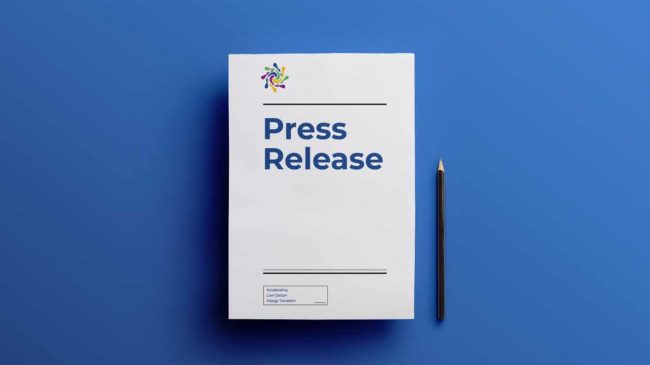
Jakarta, March 20, 2024 – Indonesia’s iron and steel industry is experiencing consumption growth. Data from the Coordinating Ministry for Economic Affairs shows that in 2022, the average steel consumption was 15.62 million tons annually. This number exceeds the average steel production of around 12.46 million tons annually. Meanwhile, in terms of exports, the iron and steel industry experienced an increasing trend from USD 7.9 billion in 2019 to USD 28.5 billion in 2022.
Increased consumption of iron and steel on a national level directly impacts the amount of greenhouse gas emissions. According to the Institute for Essential Services Reform (IESR) report, the iron and steel industry alone contributes to 4.9% of total industrial emissions. This amounts to approximately 430 million tons of carbon dioxide in 2022, equivalent to 20-30 million tons per year. To promote greener and more sustainable business practices, the IESR recommends that the government and iron and steel industry players work together to reduce emissions.
The Executive Director of IESR, Fabby Tumiwa, stated it is crucial to address the transfer of iron and steel production process technology to decarbonize the iron and steel industry sector. Currently, 80% of iron and steel production in Indonesia is still produced using blast furnace technology, which relies heavily on coal and coke as fuel. This means that reducing emissions in Indonesia’s iron and steel industry will become increasingly challenging if the use of blast furnace technology continues to rise.
“Steel is a vital material required for various developmental purposes, including producing technologies that support the worldwide shift towards renewable energy. To generate 1 MW of renewable energy using solar panels and wind turbines, we need approximately 20-180 tons of steel. Therefore, it is essential to decarbonize the steel industry to ensure that the technology supply chain becomes low-carbon through increased energy efficiency. One way to achieve this is by switching to environmentally friendly technology, using renewable energy, and optimizing the use of recycled steel (scrap),” said Fabby Tumiwa in the Webinar Accelerating the Transformation of the Steel Industry in Indonesia and Southeast Asia organized by IESR and Agora Industry.
The urgency to reduce carbon emissions in the iron and steel industry is influenced globally by low-emission product regulations, carbon limits for exports, and carbon trading. At the national level, Farid Wijaya, a Senior Analyst at IESR, stated that decarbonizing the iron and steel industry can help achieve Indonesia’s economic growth goals, protect the domestic supply chain and future economy, and increase export competitiveness for global markets that value environmentally friendly practices.
“To reduce carbon emissions in the industry, it is essential to establish regulations and standards for building a green industry ecosystem. This ecosystem should include the provision of green energy and low-carbon technology. To effectively achieve this goal, each industry and association needs to develop a clear roadmap for decarbonization. Currently, this roadmap only exists for a few sectors and has not yet been established as a regulation that can serve as a basis for action by industry players and associations,” Farid said.
The IESR study provides recommendations to encourage the reduction of carbon emissions in Indonesia’s industrial sector. Firstly, the Ministry of Industry should complete the industrial decarbonization roadmap by the end of 2024 or sooner. Secondly, the study recommends strengthening the reporting and data collection process regarding implementing the Minister of Industry Regulation No.2/2019, which concerns the procedures for submitting industrial data through the National Industrial Information System (SIINAS). This will ensure the disclosure of industrial sustainability reports for transparency and access to information, mainly reporting on energy and raw material use and waste generated. Finally, the study suggests benchmarking green industry production processes and expanding the scope and limit values of green industry standards (SIH) from voluntary and referring to local best practices to mandatory, based on the emission reduction needs in 2060 or earlier.
Kajol, Southeast Asia Climate-Neutral Industry Program Manager, Agora Industri, said the transformation of the iron and steel industry requires three strategies, namely the use of direct and indirect renewable energy, resource efficiency and the implementation of a circular economy, and ending the carbon cycle with the use of Carbon Capture Use and Storage (CCU/S) and biomass and bioenergy supplemented with CCS (BECCS).
Fausan Arif Darmadi, Infrastructure Development Analyst, Center for Green Industry, Ministry of Industry (Kemenperin), it is worth noting that the party has introduced a green industry standard (SIH) that covers various aspects such as raw materials, auxiliary materials, energy, production processes, products, business management, and waste management. Minister of Industry Regulation (Permenperin) No. 12 of 2023 also sets limits on energy use, water consumption, and greenhouse gas (GHG) emissions for coated steel. This regulation aims to assist companies in adopting an efficient and eco-friendly production process.
“The commitment of the industrial sector is crucial in reducing carbon emissions. As a result, the Ministry of Industry has offered training to the steel industry on calculating greenhouse gas (GHG) emissions and determining the economic value of carbon. Meanwhile, a comprehensive guide to aid in calculating the economic value of carbon is currently in development,” said Fausan.

